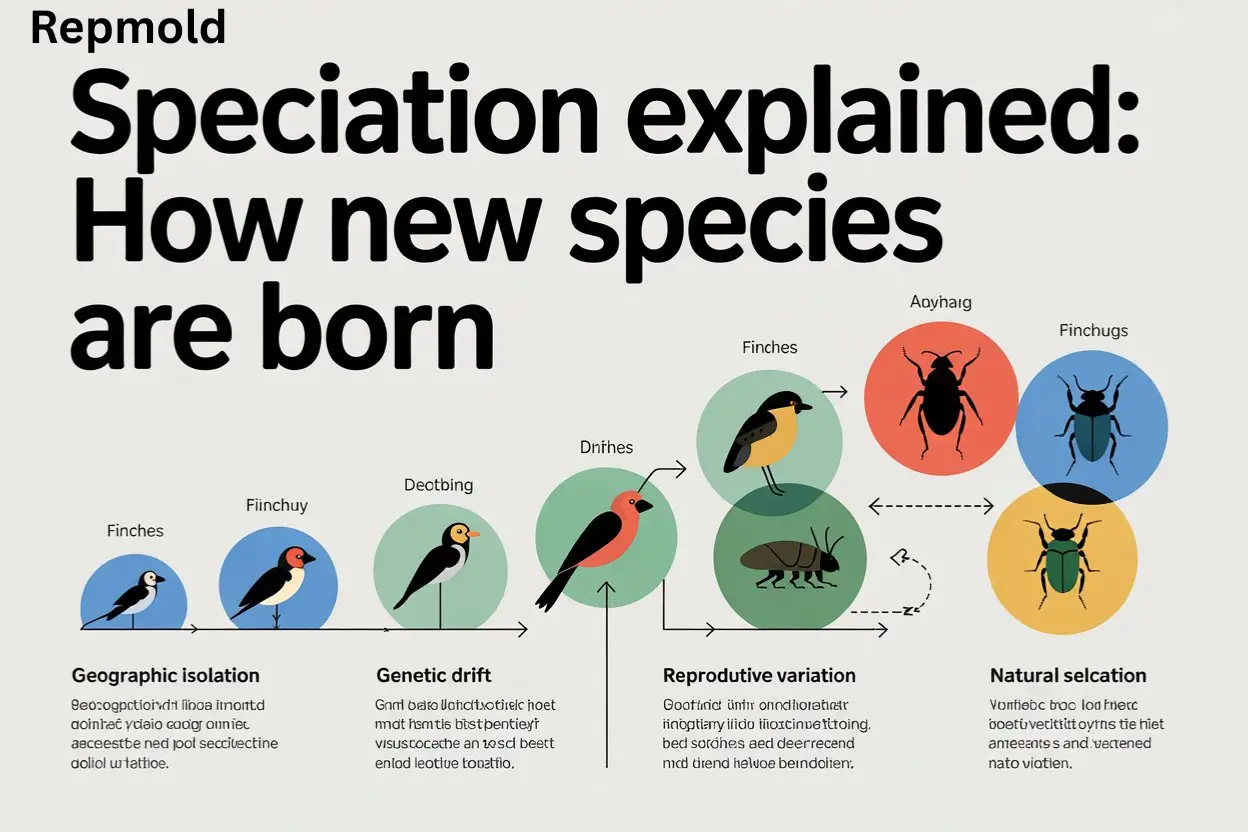Introduction : The Hidden Story of Life’s Diversity
Did you know that Earth is home to more than 8.7 million species? From the tiniest bacteria to giant whales, life exists in every corner of our planet. Yet, all these living beings share one fascinating connection—they evolved from common ancestors through a process known as speciering.
Speciering, also called speciation, is the natural process that creates new species over time. It is the invisible engine of evolution, shaping the incredible biodiversity we see in forests, oceans, and even deserts. Through genetic variation, natural selection, and reproductive isolation, life constantly adapts and diversifies.
Understanding speciering helps us appreciate nature’s endless creativity. It shows how change drives survival and how ecosystems stay balanced. In short, speciering is not just biology—it is the story of life’s ongoing transformation on Earth.
What Is Speciering? The Foundation of Evolution
Speciering is the process through which one species slowly splits into two or more new species. It happens when populations of the same organism become separated and begin to change in different ways. Over time, these changes make them so different that they can no longer breed together. This is when a new species is officially born.
Although speciering and evolution are closely linked, they are not the same. Evolution refers to all the small genetic changes that occur within a population over generations. Speciering, however, is the special outcome of evolution—it marks the point when those changes create a completely new species.
Even tiny genetic mutations or environmental shifts can trigger speciering. A change in climate, habitat, or food source may isolate a population. Gradually, these differences build up, forming new species perfectly suited to their unique environments. This is how nature keeps reinventing life.
The Science Behind Speciering
The process of speciering is powered by several natural forces that work together over time. These forces shape how populations change, adapt, and eventually become new species.
First, genetic mutations create small but important differences in DNA. These random changes introduce new traits into a population. Some mutations are helpful, improving survival and reproduction. Others may have no effect, yet all add to genetic variation, which is essential for evolution.
Next, natural selection plays its part. It favors individuals with traits best suited to their environment. Over many generations, these traits become common, while weaker traits disappear.
Then come environmental pressures such as climate shifts, food scarcity, or new predators. These challenges push species to adapt or perish, speeding up divergence.
Finally, reproductive isolation ensures separated groups no longer interbreed. Once this happens, gene flow stops, and unique species begin to form. Together, these forces make speciering the true heartbeat of evolution.
The Four Main Types of Speciering
Speciering can occur in several ways, depending on how populations become separated or change over time. Scientists usually describe four main types of this fascinating process.
First, Allopatric Speciering happens when a population is divided by a physical barrier. Mountains, rivers, or oceans can isolate groups, preventing them from mating. Over time, they adapt to their new surroundings and evolve into distinct species. A famous example is Darwin’s finches on the Galápagos Islands, each developing unique beak shapes for different foods.
Next, Peripatric Speciering occurs when a small group breaks away from a larger population. Because the group is tiny and isolated, genetic changes happen quickly. For instance, many island birds, like the New Zealand kiwi, evolved this way.
Parapatric Speciering takes place when neighboring populations experience different environments. Although they are close, limited breeding and different selection pressures cause gradual divergence. Grasses growing near metal-rich soils show this type of evolution.
Finally, Sympatric Speciering occurs within the same habitat, without physical barriers. Here, behavioral or ecological differences drive separation. A well-known example is African cichlid fish, which evolved into hundreds of species in the same lakes by adapting to unique food sources.
Together, these four types reveal how nature uses distance, behavior, and environment to create new forms of life.
Reproductive Isolation : The Turning Point of New Species
At the heart of speciering lies a crucial process known as reproductive isolation. It is the moment when two populations can no longer produce fertile offspring, marking the true birth of new species.
Reproductive isolation works through two main barriers—prezygotic and postzygotic. Prezygotic barriers occur before fertilization. They prevent mating altogether or stop fertilization from happening. For example, some species live in different habitats or breed in different seasons. Others have unique mating calls or rituals that only attract their own kind. Even physical differences, such as body size or reproductive structure, can stop mating between populations.
On the other hand, postzygotic barriers happen after fertilization. They allow mating but prevent successful reproduction. The offspring may be weak, sterile, or unable to survive. A famous example is the mule, the sterile hybrid of a horse and a donkey.
Through these barriers, nature ensures that once populations start to diverge, they remain separate. This permanent separation completes the speciering process and maintains the rich diversity of life we see today.
Speciering in Action : Nature’s Case Studies
The beauty of speciering is that it can be seen all around us. Nature provides countless examples of how new species form and adapt to survive. Each story reveals evolution’s creative power and diversity.
A classic example is Darwin’s finches from the Galápagos Islands. When finches arrived on different islands, they faced unique environments. Over time, they evolved distinct beak shapes suited to local food sources. This process, known as adaptive radiation, turned one ancestral species into many.
Another remarkable case is the cichlid fish in Africa’s Great Lakes. In the same waters, these fish evolved into hundreds of species, each with its own color, shape, and feeding strategy. Their rapid diversification shows how quickly speciering can occur under strong ecological pressure.
Similarly, polar bears and brown bears demonstrate environmental adaptation. As some bear populations moved north, they adapted to icy habitats, evolving white fur and fat layers for survival.
Finally, in the plant world, plants and their pollinators showcase coevolution. Flowers often evolve shapes and colors that match specific insects or birds. In turn, pollinators adapt to feed more efficiently, creating entirely new species on both sides.
These living examples prove that speciering is not a theory of the past—it is a continuous and creative process shaping life today.
Why Speciering Matters in Today’s World
Speciering is not just an ancient process—it is a living force that shapes our planet every day. It sustains biodiversity, keeps ecosystems balanced, and allows life to adapt to constant change. Without it, Earth would lose its ability to renew and recover.
Through speciering, new species fill empty ecological roles, ensuring food chains and habitats stay stable. Each species contributes something unique, whether it’s pollinating plants, controlling pests, or enriching soil. Together, they form the complex web that supports all life.
In today’s world, climate change and habitat loss threaten this balance. Yet, speciering also offers hope. It allows organisms to adapt and evolve in response to new environmental challenges.
Moreover, studying speciering helps scientists predict how species will respond to global changes. It guides conservation efforts, helping protect endangered populations before it’s too late.
Understanding speciering reminds us that evolution is ongoing—and that every new species born strengthens life’s resilience on Earth.
Human Influence on Speciering
Humans play a powerful and complex role in speciering. Our actions can both accelerate and disrupt the natural process of evolution. In many ways, we have become one of nature’s strongest evolutionary forces.
First, habitat destruction and fragmentation separate populations that once lived together. When forests are cleared or cities expand, species are forced into isolated pockets. Over time, these groups evolve independently, sometimes forming entirely new species. Yet, in many cases, others go extinct before evolution can act.
Next, artificial selection and breeding show how humans can intentionally shape new life. Through selective breeding, we’ve turned wild wolves into dogs and wild mustard into cabbage, kale, and broccoli. These are examples of human-guided speciering.
However, climate change adds another layer of influence. As temperatures rise, species migrate to new regions. When they meet related species, hybridization can occur—creating new hybrids or blurring old boundaries.
In the end, humanity’s role in speciering is a double-edged sword. We have the power to create, but also the power to destroy. Understanding our impact helps us protect evolution’s delicate balance—and ensure life continues to diversify on a thriving planet.
The Mystery and Future of Speciering
Despite decades of study, speciering remains one of evolution’s greatest mysteries. Today, modern genetics and genomics are giving scientists powerful tools to uncover its secrets. By analyzing DNA, researchers can now trace how tiny genetic changes lead to completely new species over time.
Through these studies, we’ve learned that speciering doesn’t follow a single path. Sometimes, it happens slowly across millions of years. Other times, it occurs surprisingly fast—within just a few thousand generations. Yet, many questions remain unanswered.
For example, how fast can new species truly form? And in some cases, can species merge back together after being separated? Scientists are also exploring the role of hybridization, where two species mix and create new evolutionary possibilities.
As research continues, one thing is clear—speciering is not just a story of the past. It is an ongoing process, shaping the future of life on Earth. Every discovery brings us closer to understanding how nature endlessly reinvents itself.
Conclusion : Life’s Endless Creation
Speciering is truly nature’s creative engine—the silent force behind Earth’s endless diversity. Through countless generations, it transforms simple beginnings into extraordinary life forms. Every new species, from birds to bacteria, is a living proof of evolution’s beauty and power.
Yet, this process depends on balance. As humans, we hold great responsibility in protecting that balance. By conserving forests, oceans, and wildlife, we safeguard not only existing species but also the future ones yet to evolve.
Every tree, river, and ecosystem is a stage where speciering continues its timeless performance. Protecting them means keeping the story of life alive.
So, take a moment to look around. Explore nature, learn more about evolution, and appreciate the world’s living diversity. Because every creature, no matter how small, plays a part in life’s endless creation.

